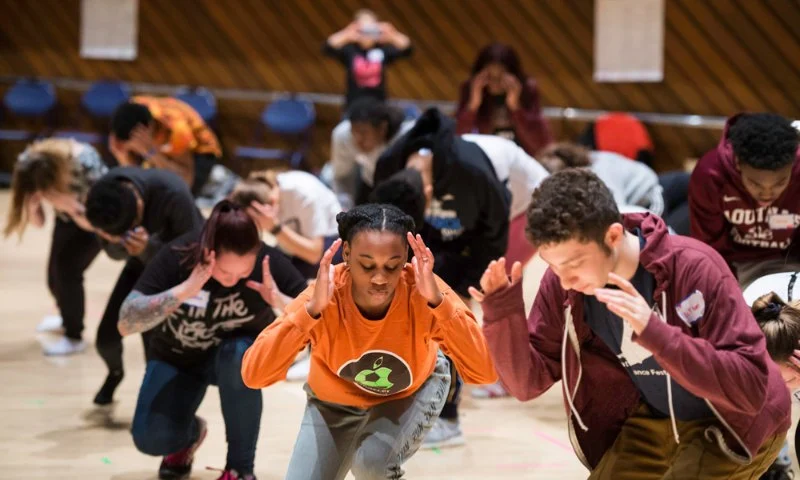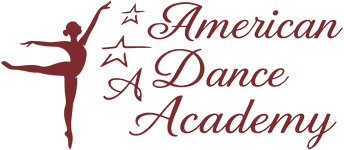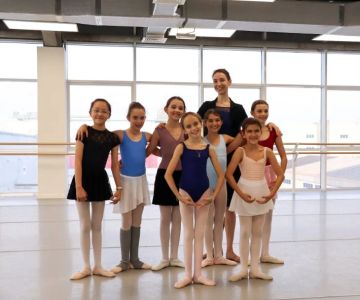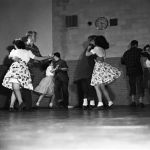
- 1. The Importance of Community in a Dance School
- 2. Creating Engaging Dance Programs for Students
- 3. A Personalized Approach to Dance Education
- 4. Building Strong Relationships Between Teachers and Students
- 5. Success Story: How a Dance School with 54 Students Thrives
- 6. Expanding the Vision: Growing a Dance School Beyond 54 Students
- 7. Recommendations for Aspiring Dance Schools
1. The Importance of Community in a Dance School
In any dance school, the sense of community plays a vital role in shaping the experience of both students and instructors. A school with 54 students offers the perfect opportunity to create an intimate and supportive environment, where every student can feel valued and part of something larger than just the lessons themselves. Building a community within the school encourages teamwork, mutual respect, and personal growth, which are all key to a thriving dance culture.
2. Creating Engaging Dance Programs for Students
At a dance school with 54 students, the ability to create engaging and diverse programs is crucial to keeping students motivated and excited. Offering a variety of classes—whether it’s ballet, jazz, contemporary, or hip hop—allows students to explore different dance styles and develop a well-rounded skill set. By tailoring programs to the interests and skill levels of the students, the school fosters a dynamic and inclusive atmosphere where every dancer feels challenged and encouraged to reach their full potential.
Specialized Classes and Workshops
Additionally, specialized workshops, masterclasses, and guest teacher events provide students with opportunities to learn from professionals in the dance industry, broadening their horizons and fueling their passion for dance. The smaller class size allows for more individualized attention, ensuring that each student receives the guidance they need to improve their technique and confidence.
3. A Personalized Approach to Dance Education
One of the key benefits of a dance school with 54 students is the ability to offer personalized instruction. With fewer students, teachers can focus on individual progress, providing tailored feedback and addressing specific challenges faced by each dancer. This level of personalization not only enhances the learning experience but also helps build strong, trusting relationships between teachers and students. In turn, this leads to higher engagement, improved performance, and greater satisfaction among the students.
Tracking Progress
By tracking each student’s progress and setting individualized goals, the dance school ensures that every student is moving forward at their own pace while still being part of the larger group. This approach helps maintain motivation and creates a sense of accomplishment when goals are met.
4. Building Strong Relationships Between Teachers and Students
In a smaller school, where the student-to-teacher ratio is low, teachers have the unique opportunity to form deeper connections with their students. These relationships are essential for creating a positive learning environment where students feel comfortable expressing themselves and trying new things without fear of judgment. Teachers can mentor students, offer encouragement, and help them navigate the challenges of both dance and life in a way that promotes personal growth and resilience.
Mentorship and Support
Mentorship goes beyond technical skills—it includes supporting students emotionally and helping them build confidence. When students feel supported and seen, they are more likely to stay motivated and committed to their dance education. This is especially true in a dance school with 54 students, where each individual is truly valued within the community.
5. Success Story: How a Dance School with 54 Students Thrives
A perfect example of a successful small dance school is the “Rhythm Dance Academy,” a school with 54 students that has cultivated a loyal and dedicated community. By offering a personalized curriculum and fostering a close-knit environment, the academy has created a space where students feel supported in their artistic journey. Through word of mouth and consistent excellence in both technique and community-building, the academy has grown its reputation and even seen a steady increase in students over time.
6. Expanding the Vision: Growing a Dance School Beyond 54 Students
While starting with 54 students provides a solid foundation, many dance schools dream of growing their numbers while maintaining the close-knit atmosphere that makes them special. Expansion can be achieved through a variety of strategies, including offering additional programs, hosting community events, and increasing marketing efforts. By ensuring the school’s core values of personalized attention, community, and diverse offerings remain intact, a dance school can successfully expand without sacrificing the experience it provides to its students.
Incorporating New Technologies
Incorporating new technologies, like online classes or virtual performance opportunities, can also help expand the reach of the school, making it more accessible to a broader audience while maintaining the sense of community. These adaptations allow for growth without compromising the quality of the students' education or the close teacher-student relationships that are the hallmark of successful schools.
7. Recommendations for Aspiring Dance Schools
For those looking to start their own dance school or expand an existing one, there are several key recommendations to keep in mind:
- Build a strong community: Fostering a sense of belonging and support among students is critical to the long-term success of your school.
- Offer diverse programs: Tailor your dance programs to the interests and needs of your students to keep them engaged and excited to return.
- Provide personalized attention: Ensure that your teachers have the time and resources to give individualized feedback to each student, regardless of class size.
- Stay connected with students and parents: Communication is key to building trust and keeping your school’s community strong.
If you’re looking for inspiration or guidance on building a thriving dance community, visit American Dance Academy, where you can find excellent dance resources and programs to elevate your school's potential.







 Barrington Dance Academy5.0 (22 reviews)
Barrington Dance Academy5.0 (22 reviews) Canyon Concert Ballet4.0 (17 reviews)
Canyon Concert Ballet4.0 (17 reviews) Big City Dance Center LLC4.0 (25 reviews)
Big City Dance Center LLC4.0 (25 reviews) Tye Chua Dance & Kalamazoo Ballet5.0 (18 reviews)
Tye Chua Dance & Kalamazoo Ballet5.0 (18 reviews) Fenton Ballet Theatre4.0 (24 reviews)
Fenton Ballet Theatre4.0 (24 reviews) Front Street Dance Center5.0 (7 reviews)
Front Street Dance Center5.0 (7 reviews) Are There Dances in Middle School? What Students and Parents Should Know
Are There Dances in Middle School? What Students and Parents Should Know How a Dance School in Instagram Builds Community and Success
How a Dance School in Instagram Builds Community and Success Why Do Schools Teach Square Dancing?
Why Do Schools Teach Square Dancing? Why Was Square Dancing Taught in School?
Why Was Square Dancing Taught in School? Why Swing Dance Is Popular for Adults
Why Swing Dance Is Popular for Adults A School Dance: How to Prepare, Shine, and Make It Unforgettable
A School Dance: How to Prepare, Shine, and Make It Unforgettable